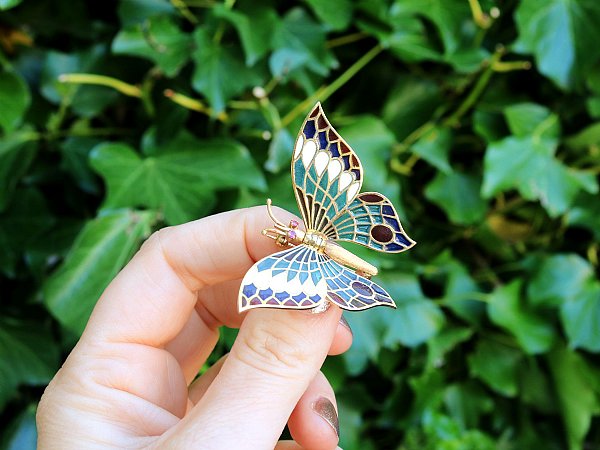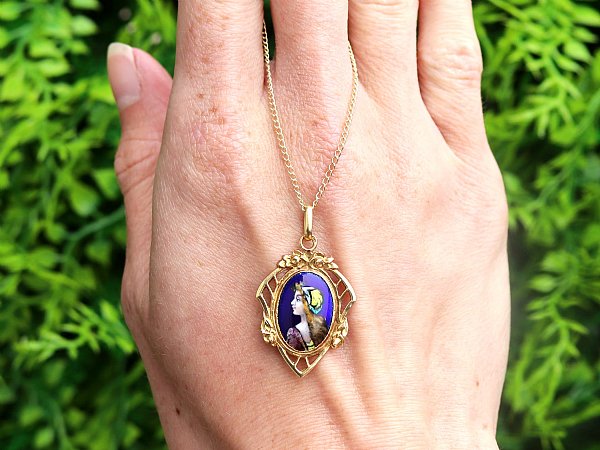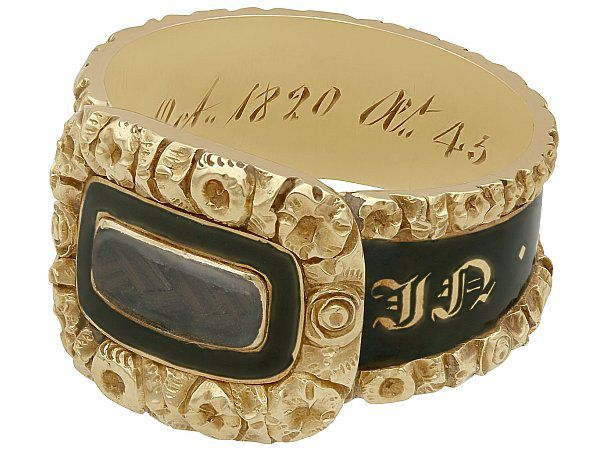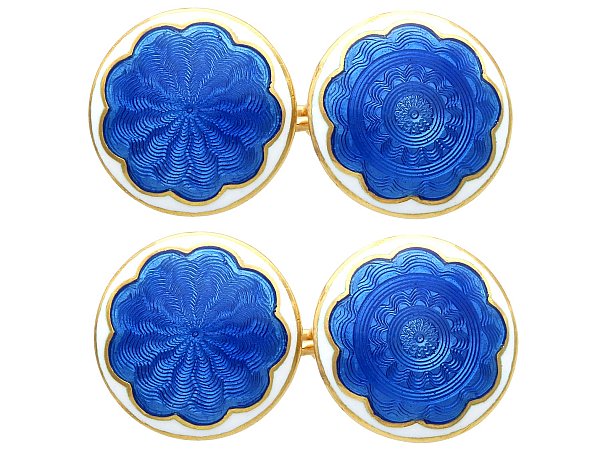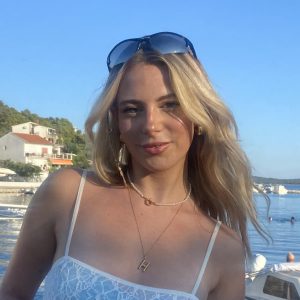The bright colours of enamel jewellery appear to be working their way back into our jewellery boxes. Once a timeless classic, high end enamel jewellery is coming back in trend as contemporary jewellery brands all fight to put their modern spin on it, but let’s not forget the antique and vintage pieces that inspired them!
What Is Enamel Jewellery?
Enamel is the result of a decoration technique that is often found in jewellery. The enamelling process involves finely ground glass particles fused onto a metal surface using high heat, forming a hard glossed material. To create different colours, oxides can be added to the glass powder. Different oxides result in different colours – for example iron and uranium creates yellow whilst tin creates white. Of course, there are various enamelling techniques from Cloisonné, practiced by the ancient Greeks, to Limoges, a technique created in 12th century France.
Enamel Jewellery History
Enamel jewellery can be traced back through various eras, from ancient Greeks to the Victorians…
Ancient Origins
Enamel can be traced back to ancient origins. The earliest known form of enamel decoration is thought to be six gold rings dated from 13th century BC, that were discovered in a Mycenæan tomb in Cyprus. Ancient Egyptians mastered cloisonné enamel, crafting intricate designs with brilliant hues for jewellery and adornments, signifying status and religious beliefs. This art spread across cultures, from the intricate filigree and enamelling in Byzantine jewellery to the stunning motifs in Chinese cloisonné from the Ming dynasty. Enamel jewellery was not just a craft but a symbol of wealth, craftsmanship, and cross-cultural influences throughout ancient history.
Renaissance period
Emerging from the Medieval era, the Renaissance saw highly skilled craftsmen and goldsmiths re-embrace classical art and embrace the period’s extravagance. Jewellery became a key symbol of social status, with men and women equally adorned in luxurious pieces. Renaissance goldsmiths, like Cellini, created beautiful enamelled pieces in basse taille and plique a jour but enamel was later revolutionized in the late 15th century with the Limoges technique; layering molten glass and painting on them to create delicate portraits.
The renaissance period perceived jewellery as wearable art; an idea reinforced in intricate enamel designs. Multifunctional jewellery was highly desirable, with elaborate pendants surpassing the medieval brooch as the most popular accessory. These pendants were often decorated on both the front and the back and featured rich enamel details, often depicting religious iconography, mythological scenes, and natural motifs, serving as status symbols for nobility and wealthy patrons. At this time enamel brooches were also multi-functional as pendants. It was not uncommon for a renaissance jewellery piece to exchange hands of several makers; cast by a goldsmith, enamelled by another, and set with gemstones by yet another.
Victorian Era
Victorians adored guilloché enamel, where intricate patterns were engraved onto metal before being coated with translucent enamel, creating a luminous effect. Following the death of Prince Albert, mourning jewellery, adorned with black enamel and hairwork, became particularly fashionable, serving as poignant mementos of lost loved ones. This period saw enamel jewellery reach new heights of sentimentality, reflecting the era’s fascination with detail, craftsmanship, and the expression of personal and emotional narratives through art.
Art Nouveau Movement
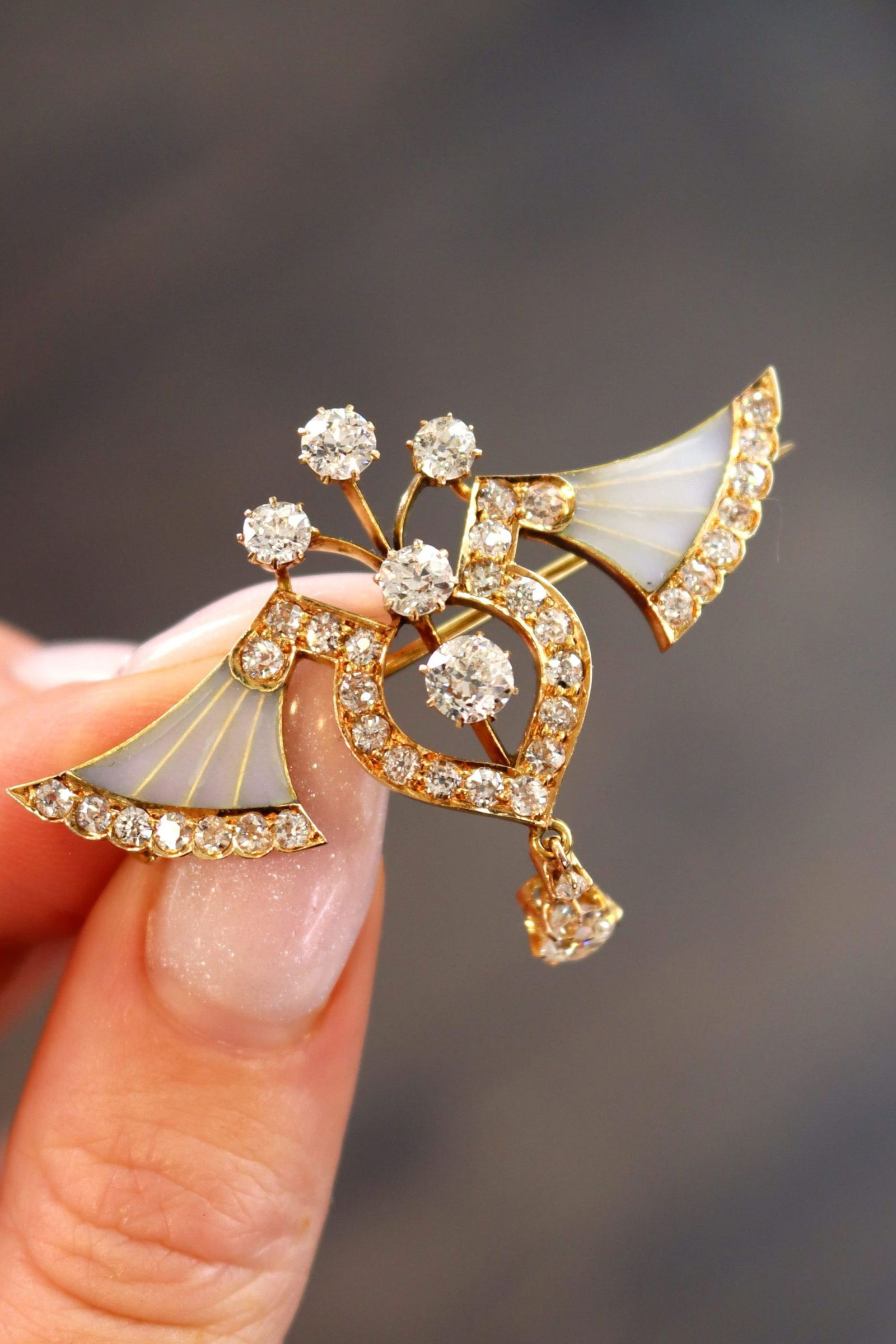
In 1858, Eastern trade routes were reopened, serving as contributing inspiration to many. Japonisme, as it came to be called, provided a stark contrast to the fuss of Victorian Era design that the new craft movement was searching for. As a result various themes and techniques transpired to epitomise Art Nouveau jewellery. Insects, especially dragonflies and butterflies, were interpreted in a myriad of ways and mediums including enamel. Enamel played a crucial role in bringing designs to life and adding vibrant colours, which were core elements of Art Nouveau design. Plique-à-jour enamelling created translucent effects reminiscent of insect wings and plants, adding lifelike qualities to the creatures and flora. Champlevé enamel and Pâte de Verre techniques contributed a three-dimensional depth to the jewellery.
Art Deco Period
Whilst not as popular as during the Art Nouveau period, the Art Deco period of the 1920s-1930s saw a revival in the popularity of enamelled pieces. Art Deco jewellery stood out with monochromatic looks of white diamonds against black enamel created striking pieces, whilst the carryover oriental influence from the Art Nouveau period continued to be prominent in red and black enamel designs.
Notably figures included Rene Lalique, known primarily for his Art Nouveau jewellery and objets d’art, was also an important designer of the Art Deco era. His designs were mainly of the early Art Deco style, working primarily in coloured transparent glass and enamelling to create eleborate head jewellery and pendants along side signature glasswork.
Mid-20th Century to Present
From the mid-20th century to the present day, enamel jewellery has undergone significant evolution, blending traditional techniques with contemporary designs. The vibrant nature of enamel made it a favourite among designers in the 1950s and 1960s, who embraced bold colours and abstract patterns. In recent years, enamel jewellery has seen a resurgence in popularity, with jewellers and high-end brands experimenting with new textures, colours, and forms. Today, enamel continues to be celebrated for its versatility and timeless appeal, bridging the gap between classic craftsmanship and modern artistry.
How to Care for Enamel Jewellery
Enamel deserves special care to ensure its longevity and lustre. Whilst fairly durable and unlikely to scratch, enamel should be handled with care, as it is ultimately glass fused onto metal. We recommend always removing your enamel jewellery before engaging in any physical work, exercise or activities where your jewellery could come to contact with hard surfaces.
To keep your enamel pieces looking their best, regular cleaning is essential. Use a soft cloth dampened with water and a few drops of mild dishwashing liquid to gently wipe away any dirt or residue. Harsh or abrasive chemicals should be avoided, as they can damage the enamel finish. After cleaning, be sure to dry your jewellery thoroughly with a soft cloth to prevent water spots.
Store your jewellery in lined jewellery boxes or soft pouches to protect them and remember to store them away from sunlight as over time prolonged exposure to heat or moisture can cause the enamel to deteriorate.
One of the advantages of enamel jewellery is its protective coating, which helps protect the underlying metal from tarnishing or scratches. Additionally, the vibrant colours of enamel are unlikely to fade over time, ensuring that your jewellery retains its beauty for years to come. By following these simple care tips, you can ensure that your enamel jewellery remains a cherished accessory for generations to come!


